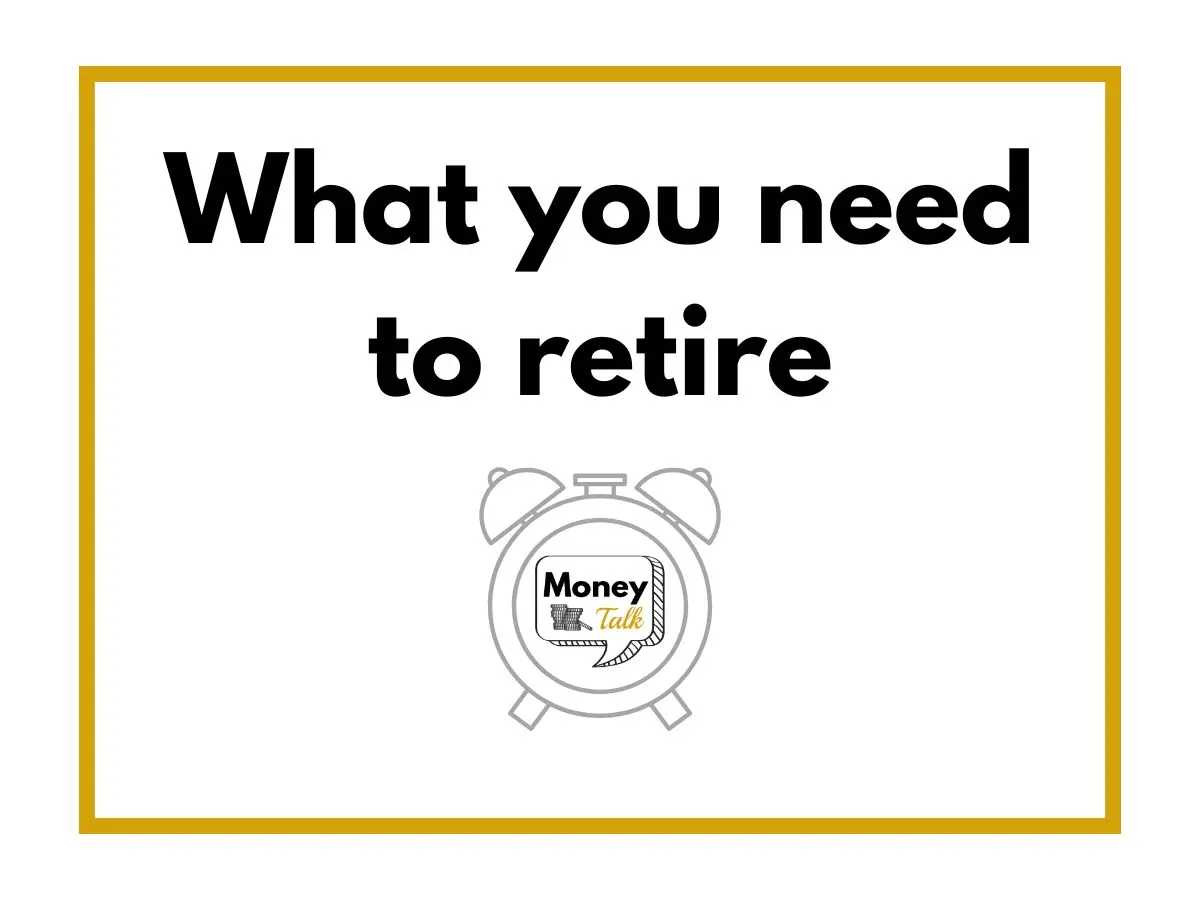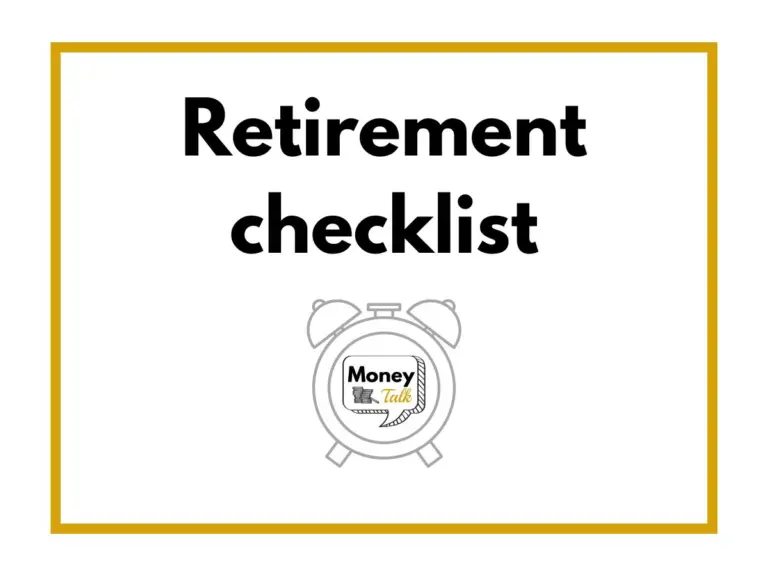How much money do you need to retire in the UK?
Money Talk is intended to inform and educate; it's not financial advice. Affiliate links, including from Amazon, are used to help fund the site. If you make a purchase via a link marked with an *, Money Talk might receive a commission at no cost to you. Find out more here.
Retirement can feel like a long way off, especially when you’re in your 20s or 30s.
But as the experts always say, the sooner you start planning, the better off you will be.
Before you start retirement planning though, it’s helpful to know how much money you’ll actually need when you retire so you can properly budget for it.
After all, you want to be able to enjoy the fruits of your labour while you’re still young rather than saving it all for retirement.
So how much money do you need to retire? Well, it depends on the lifestyle you’re after.
The industry standard on retirement
A lot of investment firms and pension providers have looked at how much money people need to retire, but the industry standard now seems to be figures released by the Pensions and Lifetime Savings Association (PLSA).
PLSA represents workplace pension scheme providers that together oversee the portfolios of over 30 million people in the UK.
Suffice to say, they have some authority on the issue.
The PLSA created the guide to Retirement Living Standards in 2019 precisely because they saw that a lot of people didn’t know how much money they needed to retire, and therefore weren’t properly planning for the future.
Although the figures have been updated since its launch to reflect changing cost of living, it’s done relatively infrequently.
The last update was done using research carried out in 2023, for example.
This is worth bearing in mind because in all probability, you’ll need more money than what the figures suggest for a comfortable retirement.
Understanding the Retirement Living Standards guide
A multi-step process went into creating the Retirement Living Standards guide.
There was a consultation with the pensions industry, research by Loughborough University’s Centre for Research in Social Policy, and focus groups held around the country.
All of this information went into creating a basket of goods that’s used to calculate the expected cost of living when you retire.
If you think the term basket of goods sounds familiar, it’s because it’s more or less the same process that the government uses to measure inflation.
This basket of goods includes all the essentials like household bills, clothes, and medical care, as well as some frills like holidays and eating out (you can download the full list here).
Crucially, the Retirement Living Standards guide assumes you are living mortgage and rent free in retirement.
This, it says, is because “most older households are currently projected to be owner-occupiers over the next 20 years or to be in receipt of Housing Benefit”.
The guide also doesn’t factor in any social care needs, or any dependents who may still be relying on you financially.
So if your circumstances are different from what the PLSA describes, you’ll need to factor this into your own projections, which could significantly increase the amount of money you need on retirement.
On the plus side, if you are still working in retirement, or you have substantial savings, your pension pot can be smaller than the guide suggests without impacting your standard of living.
How much money do you need to retire in the UK?
The Retirement Living Standards guide breaks down retirement into three lifestyle categories: minimum, moderate and comfortable.
For each lifestyle, your minimum retirement income will depend on whether you’re single or in a couple, with singletons needing more money.
The figures given are also income after tax so you’ll need a slightly higher pre-tax income.
On the flip side, most people above State Pension age don’t have to pay National Insurance, which means your pre-tax income doesn’t need to be as high as for someone who’s still of working age.
The minimum lifestyle
To live the minimum lifestyle, you’d need a retirement income of:
- £14,400 a year after tax if you’re single – about £14,858 pre-tax, assuming no National Insurance at State Pension age
- £22,400 a year after tax between two people – about £24,858 pre-tax, assuming no National Insurance at State Pension age
The minimum lifestyle is supposed to cover all your basic needs, with some money left over for fun and social occasions.
That means you could holiday in the UK for a week, eat out about once a month and do some affordable leisure activities about twice a week.
Although, given package holidays abroad are often cheaper than a staycation, you might actually get better value for money by going further.
Read this: How to find cheap UK holiday deals
The moderate lifestyle
To live the moderate lifestyle, you’d need a retirement income of:
- £31,300 a year after tax if you’re single – about £35,983 pre-tax, assuming no National Insurance at State Pension age
- £43,100 a year after tax between two people – about £50,733 pre-tax, assuming no National Insurance at State Pension age
The moderate lifestyle would cover everything in the minimum lifestyle, but would give you a bit more financial security and flexibility.
So you could for example have a two-week all inclusive holiday in the Med on top of your UK holiday, and be able to eat out a few times a month.
You’d also have money left over for fun extras – hobbies, days out, that sort of thing.
The comfortable lifestyle
To live the comfortable lifestyle, you’d need a retirement income of:
- £43,100 a year after tax if you’re single – about £50,733 pre-tax, assuming no National Insurance at State Pension age
- £59,000 a year after tax between two people – about £77,387 pre-tax, assuming no National Insurance at State Pension age
This amount buys you spontaneity as part of a comfortable lifestyle.
You could get regular beauty treatments for example, and take a holiday abroad alongside several mini breaks in the UK.
What’s the average retirement income in the UK?
You may well be wondering what other people’s pension pots look like.
There are some statistics around that, although they’re not very recent.
The Office for National Statistics for example releases a “Pension wealth: wealth in Great Britain” report semi-regularly.
The most recent release, from January 2025, uses data from 2022.
According to the report, the average private pension pot is worth:
| Age group | Men’s pension | Women’s pension | All pensions |
| 16 to 24 | £6,800 | £5,000 | £5,500 |
| 25 to 34 | £24,600 | £13,500 | £18,800 |
| 35 to 44 | £48,300 | £34,000 | £39,500 |
| 45 to 54 | £108,100 | £57,900 | £80,000 |
| 55 to 64 | £193,900 | £105,200 | £137,800 |
| 65 to 74 | £191,600 | £106,300 | £145,900 |
| over 75 | £84,000 | £42,800 | £59,700 |
It seems that from child-bearing age onwards, men and women’s pension pots start to diverge, with men’s pensions worth almost double that of women’s for the rest of their lives.
The Department for Work and Pensions also has a report on pensioner income – income tax has been taken off in these figures.
It was last updated in March 2025, and uses data from 2023.
According to this report, single pensioners have an average pension income of £267 a week (£13,884 a year) while those in couples have an average pension income of £561 a week (£29,172 a year).
Meanwhile, single male pensioners have an average pension income of £286 a week (£14,872 a year) but single female pensioners only have an average pension income of £259 a week (£13,468 a year), which is below the minimum income required for a minimum lifestyle.
The bottom line is, women aren’t saving as much towards their pensions so they’re being penalised on retirement.
How much money should you save for retirement?
OK, so now that you know how much other people have in their private pensions, how do you know how much you should have in yours?
Well, there’s a rule for that.
The 4% rule
The most commonly used rule to work out how big your pension pot needs to be is the 4% rule.
This rule suggests that you can safely withdraw 4% of your pension pot each year, adjusted for inflation, without running out of money.
To work out the required size of your pension pot, you just divide the amount of money you need to live off each year by 0.04 (4%).
So let’s say you’re aiming for the single person minimum lifestyle pre-tax figure of £14,858 a year, your pension pot will need to be worth at least £371,450 by the time you retire.
The 4% rule was created by researchers at the American Association of Individual Investors (AAII) based on a 30-year retirement, and the modelling is designed with the US financial framework in mind.
That means it doesn’t take into consideration the State Pension, the fact that inflation numbers are very different on this side of the Atlantic and a myriad other factors.
The 3 – 3.5% rule
Market conditions and inflation figures in the UK mean you might run out of money faster if you’re living in the UK versus the US on the same pension pot.
It’s why some experts have suggested that a 3% or 3.5% rule might be more suitable for the UK.
But, as the State Pension exists, you don’t actually need a huge private pension if you don’t plan to retire early.
Assuming you’ve qualified for the full State Pension, you can expect to get £230.25 a week for the tax year 2025/2026, which works out to be £11,973 a year.
It means to get the pre-tax annual income of £14,858 for the minimum lifestyle for singletons, you’d only need an extra £2,885 a year.
If you’re going for the safer 3% withdrawal rate then, your private pension pot would need to be worth about £96,167 by the time you retire, or about £82,429 if you’re withdrawing at 3.5%.
Other things to bear in mind
Whether you’re going for the 4% rule or the 3 – 3.5% rule will of course depend on your circumstances.
These rules are designed so that, with average market conditions, you can live off your pension pot for at least 30 years on retirement.
Often, thanks to market growth, you might actually have more money at the end of those 30 years than when you first retired.
If you’re not bothered about leaving an inheritance, you can afford to be a bit more generous with yourself and go for the 4% rule.
Of course, past performance is not an indicator of future returns, which means your pension pot might be smaller than you expect – that in turn means you might still want to veer on the conservative side.
Also, your pension might not be your only source of income.
You might still be working, have savings or have property that you could apply for an equity release on.
All that is to say, if your pension pot is currently smaller than you’d like it to be, don’t worry, you might not be in as bad a position as you think.
It’s a sentiment that Aaron Peake, personal finance expert at credit-score service CredAbility, agrees with.
He said: “Even if you’re closer to retirement, it’s not too late to take action.
“Cutting costs, making use of pension tax relief, or delaying retirement by even a year or two can make a big difference.”
Ultimately, to be better prepared, you should still sit down and work out how much you need to retire.
When can you retire?
Obviously if you have enough money, you can retire now.
If you’re working to retire, there are a couple of ages to bear in mind.
The earliest you can access any private pension is 55. From April 2028, this is going up to 57.
If you’re hoping to retire before that then you’ll need other forms of income to bridge that gap.
For the State Pension, the minimum age for eligibility is 66. Depending on when you were born, it could be up to 68.
Pin this for later








